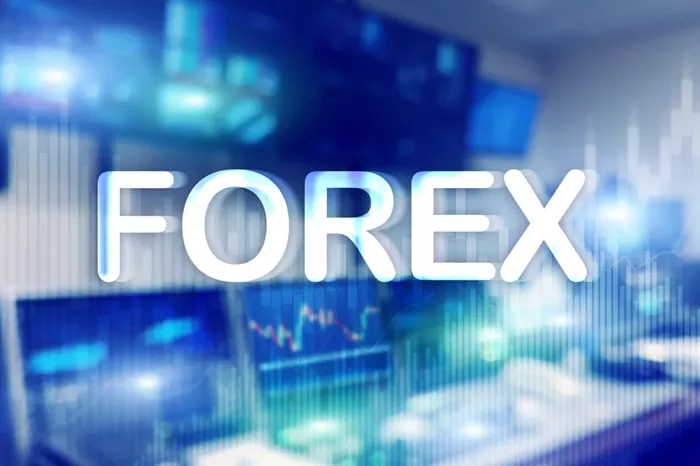Investing in index funds has become increasingly popular due to their ability to provide broad market exposure at a low cost. They are a straightforward and efficient way to diversify your portfolio, making them a suitable choice for both novice and experienced investors. In this article, we will explore what index funds are, the benefits of investing in them, and a detailed look at some of the best index funds available today.
What is an Index Fund?
An index fund is a type of mutual fund or exchange-traded fund (ETF) that aims to replicate the performance of a specific market index, such as the S&P 500, NASDAQ-100, or the Dow Jones Industrial Average. These funds are passively managed, meaning the fund’s holdings mirror those of the underlying index rather than being actively selected by a portfolio manager.
How Do Index Funds Work?
Index funds work by pooling money from many investors to purchase the stocks or bonds that make up the index they track. For example, if you invest in an S&P 500 index fund, your money will be spread across all 500 companies in the index. The goal is to achieve the same returns as the index, minus any fees associated with managing the fund.
The Benefits of Index Funds
Low Costs
One of the most significant advantages of index funds is their low cost. Since these funds are passively managed, they typically have lower expense ratios compared to actively managed funds. This cost efficiency can significantly enhance your returns over the long term.
Diversification
Investing in an index fund provides instant diversification. Instead of buying individual stocks or bonds, which can be risky, an index fund spreads your investment across a broad range of assets. This diversification reduces the impact of poor performance from any single investment.
Simplicity
Index funds are easy to understand and manage. You don’t need to pick stocks or time the market, as the fund automatically adjusts to reflect changes in the index. This simplicity makes index funds an ideal choice for long-term investors looking for steady growth.
Tax Efficiency
Index funds tend to have lower turnover rates, meaning they buy and sell securities less frequently than actively managed funds. This lower turnover results in fewer taxable events, making index funds more tax-efficient for investors.
Key Factors to Consider When Choosing an Index Fund
Expense Ratio
The expense ratio is the annual fee that all funds or ETFs charge their shareholders. It represents the percentage of your investment that goes towards the fund’s operating expenses. A lower expense ratio means more of your money is working for you.
Tracking Error
Tracking error measures how closely a fund follows its benchmark index. A low tracking error indicates that the fund closely mirrors the performance of the index, which is what investors desire in an index fund.
Fund Size
The size of an index fund, often measured by its assets under management (AUM), can impact its performance. Larger funds benefit from economies of scale, which can result in lower costs and better tracking of the index.
Reputation of the Fund Provider
It’s essential to choose funds offered by reputable providers with a history of reliability and sound management practices. Companies like Vanguard, BlackRock, and Fidelity are known for their high-quality index funds.
See Also: 6 Mutual Funds That Invest in Foreign Stocks
Top Index Funds to Consider
1. Vanguard 500 Index Fund (VFIAX)
Overview: The Vanguard 500 Index Fund is one of the most popular and well-known index funds. It tracks the S&P 500 index, which includes 500 of the largest U.S. companies, making it an excellent choice for investors looking for broad market exposure.
Expense Ratio: 0.04%
Performance: The fund has consistently delivered returns close to the S&P 500, with a low tracking error.
Why Choose It: With its low expense ratio and strong performance history, VFIAX is a solid choice for long-term investors seeking growth.
2. Fidelity ZERO Large Cap Index Fund (FNILX)
Overview: Fidelity’s ZERO Large Cap Index Fund is part of the company’s zero-fee index fund lineup. It tracks the Fidelity U.S. Large Cap Index, offering exposure to large-cap U.S. stocks.
Expense Ratio: 0.00%
Performance: Despite its zero expense ratio, FNILX has shown competitive performance compared to other large-cap index funds.
Why Choose It: FNILX is an excellent option for cost-conscious investors who want to minimize fees without sacrificing performance.
3. Schwab Total Stock Market Index Fund (SWTSX)
Overview: This fund offers exposure to the entire U.S. stock market, including small, mid, and large-cap stocks. It’s a great option for investors seeking comprehensive market coverage.
Expense Ratio: 0.03%
Performance: SWTSX has a low tracking error and provides diversified exposure to the U.S. stock market.
Why Choose It: Its broad market exposure and low expense ratio make SWTSX a strong candidate for investors looking to invest in the total U.S. market.
4. SPDR S&P 500 ETF (SPY)
Overview: SPY is the oldest and one of the largest ETFs that tracks the S&P 500 index. It is widely traded and offers high liquidity.
Expense Ratio: 0.09%
Performance: SPY closely follows the S&P 500 index and has a strong performance history.
Why Choose It: SPY is ideal for investors who prefer ETFs over mutual funds due to its high liquidity and tight bid-ask spreads.
5. iShares MSCI EAFE Index Fund (EFA)
Overview: This ETF provides exposure to developed international markets, excluding the U.S. and Canada. It tracks the MSCI EAFE Index, which includes companies from Europe, Australasia, and the Far East.
Expense Ratio: 0.32%
Performance: EFA offers a cost-effective way to invest in international markets with a decent performance record.
Why Choose It: EFA is suitable for investors looking to diversify their portfolio with international stocks.
6. Vanguard Total Bond Market Index Fund (VBTLX)
Overview: VBTLX offers broad exposure to the U.S. investment-grade bond market, tracking the Bloomberg Barclays U.S. Aggregate Float Adjusted Index.
Expense Ratio: 0.05%
Performance: The fund provides stable returns and is an excellent choice for those seeking income and diversification within their portfolio.
Why Choose It: VBTLX is ideal for investors who want to add bonds to their portfolio to reduce volatility and generate income.
7. Invesco QQQ ETF (QQQ)
Overview: QQQ tracks the NASDAQ-100 Index, which includes 100 of the largest non-financial companies listed on the NASDAQ stock exchange. It’s heavily weighted towards technology companies.
Expense Ratio: 0.20%
Performance: QQQ has outperformed many other index funds due to the strong performance of tech stocks in recent years.
Why Choose It: QQQ is perfect for investors who are bullish on the tech sector and want exposure to high-growth companies.
8. Vanguard FTSE Emerging Markets ETF (VWO)
Overview: VWO provides exposure to emerging markets, tracking the FTSE Emerging Markets All Cap China A Inclusion Index. It includes companies from countries like China, Brazil, and India.
Expense Ratio: 0.10%
Performance: VWO offers a cost-effective way to invest in high-growth emerging markets, with a decent performance track record.
Why Choose It: VWO is suitable for investors looking for growth opportunities in emerging economies.
9. Fidelity U.S. Bond Index Fund (FXNAX)
Overview: FXNAX tracks the Bloomberg Barclays U.S. Aggregate Bond Index, offering exposure to a broad range of U.S. investment-grade bonds.
Expense Ratio: 0.025%
Performance: The fund has shown strong performance, making it a reliable option for fixed-income investors.
Why Choose It: FXNAX is an excellent choice for those looking to balance their portfolio with bonds while keeping costs low.
10. SPDR Gold Shares (GLD)
Overview: GLD is an ETF that tracks the price of gold, offering investors a way to gain exposure to the precious metal without having to physically own it.
Expense Ratio: 0.40%
Performance: GLD closely tracks the spot price of gold, providing a hedge against inflation and market volatility.
Why Choose It: GLD is ideal for investors seeking to diversify their portfolio with a safe-haven asset like gold.
Conclusion
Investing in index funds is one of the smartest and simplest ways to build wealth over time. They offer diversification, low costs, and the potential for steady returns, making them suitable for almost any investor. The best index funds for you will depend on your investment goals, risk tolerance, and the type of exposure you seek.
Whether you’re looking to invest in U.S. stocks, international markets, bonds, or even specific sectors like technology or precious metals, there is an index fund that can meet your needs. By choosing the right index funds and maintaining a disciplined investment strategy, you can achieve your financial goals and enjoy long-term success in the markets.
[inline_related_posts title=”You Might Be Interested In” title_align=”left” style=”list” number=”3″ align=”none” ids=”2837,2842,2845″ by=”categories” orderby=”rand” order=”DESC” hide_thumb=”no” thumb_right=”no” views=”no” date=”yes” grid_columns=”2″ post_type=”” tax=””]































